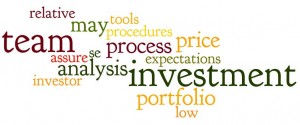The Flawed Praise of “No Marketing”
A recent article (subscription required) from FundFire covers Capital Group’s recent efforts to amp up its public communications. The short version is the firm is doing more to explicitly boost its brand and market itself.
I contributed a few thoughts to the article but wanted to expand a bit on this quote: There’s a badge of honor associated with not marketing.
It’s not rampant, but too often firms that say they don’t market themselves are falsely praised for having that stance. I touched on this in a post last month about Dodge & Cox, where Morningstar connected the firm’s reluctance to market itself to overall trustworthiness. Less obviously, Barron’s touched on Dimensional Fund Advisors’ lack of advertising in telling the story of that firm’s success.
The idea that a lack of marketing is somehow virtuous bothers me. Marketing is an agnostic discipline. You can execute well and you can execute poorly, but how you view marketing does not fundamentally make an organization better or worse.
More importantly (and obviously), ALL successful managers market themselves. They have Web sites. They have people who meet with prospects and tell them about the organization and what they offer. In some cases they even spend time with prominent publications so that those publications can write fawning articles. (Yes, I’m veering into sarcasm.)
I think it’s great that Capital Group has decided to be more proactive with the branding and marketing efforts. But the idea that they didn’t market themselves (or that any unwillingness to do so) was a part of why they did so well for so long is an utterly false narrative. I hope it’s a narrative that disappears across the industry.






